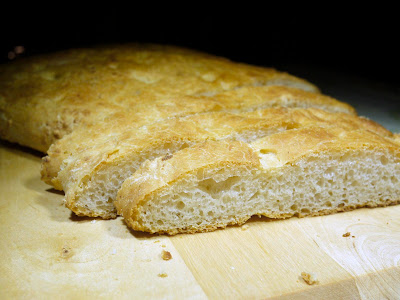From Easy Vegetarian,
Ryland Peters & Small, 2007.
The first item that required making for this recipe was the
apple butter. Apples had to be peeled and chopped then put in a saucepan
together with sugar, lemon juice, cinnamon and a drop of water. They were
simmered until the apples had become soft. This took about 15 minutes. They
were then mashed and butter was added. The mix was then cooked until it had
thickened somewhat. It was then left to cool. It was delicious; I could have
eaten it all then.
For the pancakes a mix had to be prepared. This was made
with a mix of self-raising flour and cornmeal with bicarbonate of soda (125 g
flour, 25 g cornmeal, 1 teaspoon soda). Caster sugar was added (40 g).
In a jug I beat together one egg, 350 ml of buttermilk and a
touch of melted butter. This was stirred into the flour and sugar mix to make a
batter. Blueberries were folded in, keeping some for decoration after.
The pancakes were cooked in the frying pan and then served
with apple butter on top with a little cream and some blueberries.
While designated as a breakfast meal, there is never any
time to prepare this sort of meal at that time of the morning so we had it as
dessert—and a very enjoyable one it was.
The apple butter and the blueberries went well together and
pancakes are always great to eat. These were especially light and full of
blueberries to add juicy bites. I must remember that apple butter; it’s
especially good.
This book came as a present for my partner at Christmas time
but I seem to have snaffled it to use as it looks as though it has a lot of
things worth trying.
Taste: ✔✔✔✔
Ease of
cooking: ✔✔✔✔















































